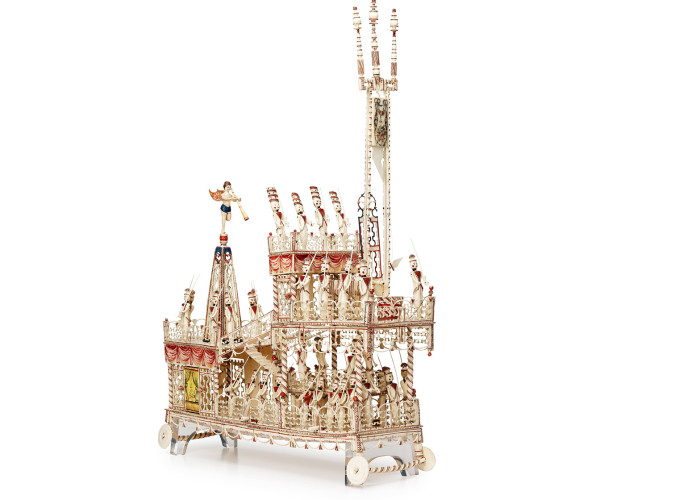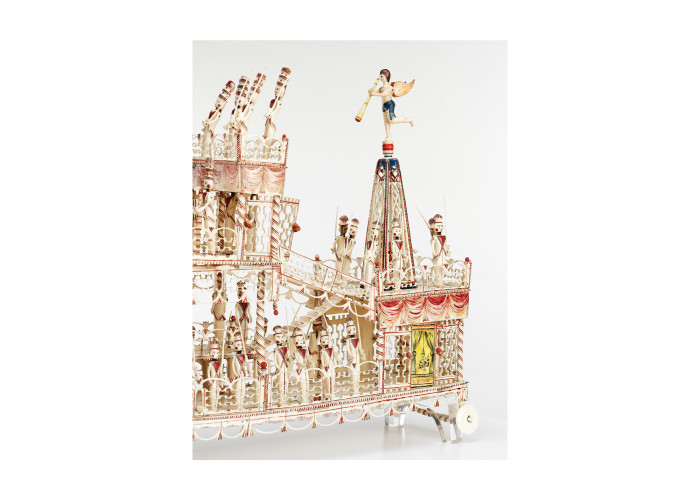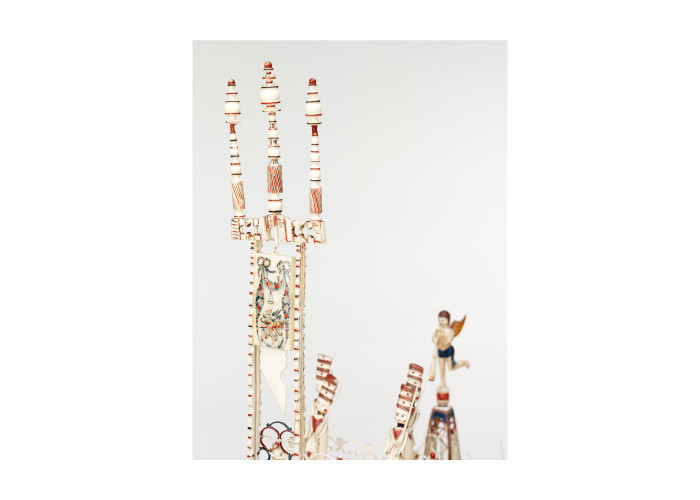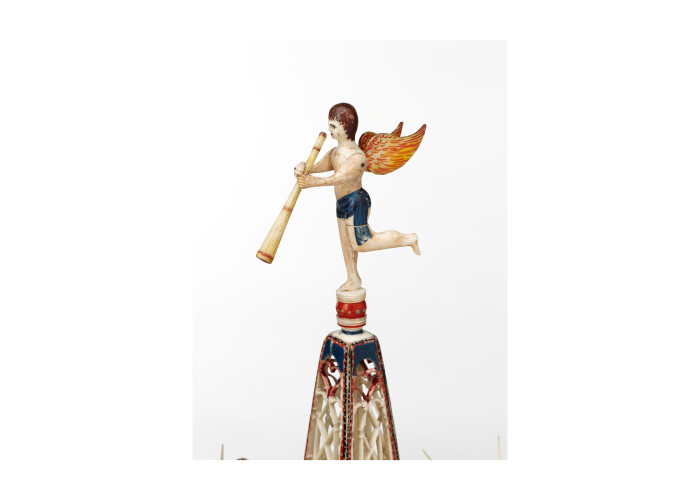Model Guillotine




This model was carved from bone by French prisoners of war, held in Britain during the Revolutionary and Napoleonic Wars (1793-1815). It was made as a model to be sold in the prison markets.
These markets were open to local civilians who came to see their ‘enemy’ at work and play, and purchased the models as souvenirs. The money the prisoners received enabled them to purchase extra food.
The model is made of bone (beef or mutton) saved from the prisoner’s food ration. Groups of men would combine their talents and make specific parts of the models, sharing in the proceeds of the sale. Some made enough money to employ other prisoners as servants and cooks and on release some went home with up to 100 guineas in their pocket – this would be worth over £6400 today.
These bone models came in all shapes and sizes including bone ships, domino boxes, and more obscure items such as chickens, houses and musical instruments. Models were also made of wood and straw, for example trinket boxes inlaid with straw patterns known as marquetry. The tools for this work were either made by the prisoners or purchased from local civilians.
This bone guillotine reflects events in the lives of many of these men. The guillotine was invented by Dr Joseph Guillotine to make execution faster and more humane, and it was the method of executing aristocrats and Royalist supporters during the French Revolution. The model actually works by cutting off the head of the victim.
During the period 1793 to 1815, over 200,000 prisoners of war were brought to Britain to be housed in the infamous prison ships or hulks at Portsmouth, Plymouth and Chatham, and the Land depots such as Dartmoor, Norman Cross, Portchester Castle and Perth. Officers resided in the Parole Depots. These were towns and villages around the country where they were billeted upon the inhabitants. During the Waterloo Campaign prisoners of war were held at Dartmoor Prison.
The prisoners were not just French. The population included Dutch, Germans, Italians, Spaniards, Danes, Poles and Americans; men, women and children, soldiers, seamen and civilians. Many spent up to 11 years in captivity. Manufacturing bone models filled their time and allowed them to improve their living conditions with the money earned.
-
Curatorial info
- Originating Museum: Plymouth City Museum and Art Gallery
- Material: Bone
- Creation Place: Norman Cross, Devon
- Technique: Scrimshaw
-
Use this image
You can download and use the high resolution image under a Creative Commons licence, for all non-commercial purposes, provided you attribute the copyright holder.
- Rights Holder: Copyright Plymouth City Council. Photography Relic Imaging Ltd.
- License Type: Creative Commons
Find it here
This object is in the collection of Plymouth City Museum and Art Gallery









